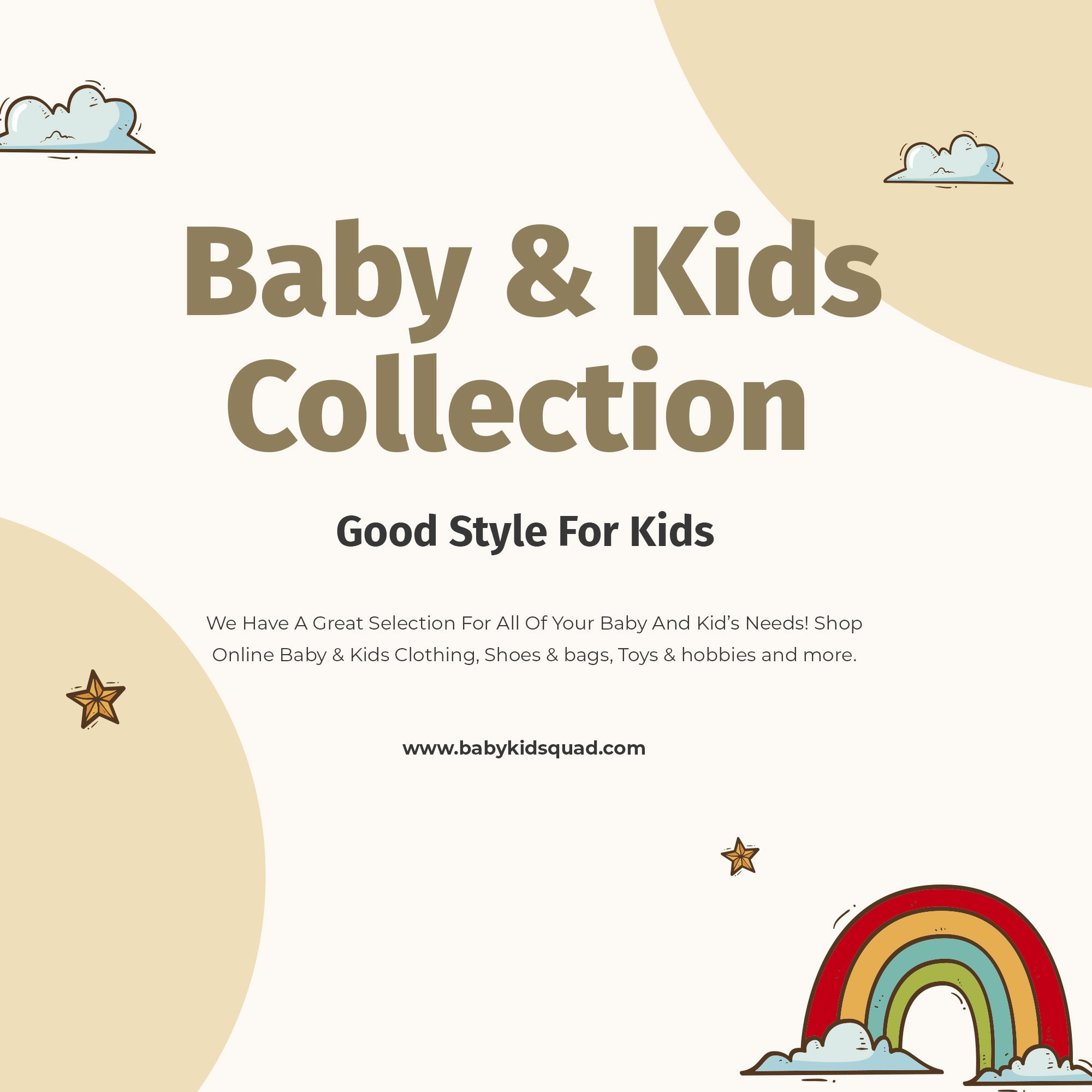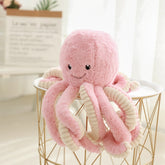How to Clean Plush Stuffed Animals: A Complete Guide for Parents
Table of Contents
- Introduction
- Understanding the Need for Cleaning Plush Stuffed Animals
- How Often Should You Clean Stuffed Animals?
- Materials Needed for Cleaning Plush Stuffed Animals
- Methods for Cleaning Plush Stuffed Animals
- Special Considerations for Electronic or Delicate Stuffed Animals
- Summary of Cleaning Plush Stuffed Animals
- Conclusion
Introduction
Did you know that stuffed animals can harbor a surprising amount of dust, dirt, and germs? In fact, research has shown that plush toys can collect allergens and bacteria, making regular cleaning essential for maintaining a healthy environment for our little ones. As parents, we want our children to have clean and safe toys, but knowing how to properly care for their beloved stuffed animals can be a bit overwhelming.
At Baby Kid Squad, we understand the importance of keeping your child's favorite toys fresh and clean while also preserving their longevity. This guide will provide you with all the information you need on how to clean plush stuffed animals effectively, whether you prefer hand-washing, machine-washing, or spot-treating. By the end of this post, you’ll have the knowledge and confidence to tackle any cleaning challenge that comes your way.
We’ll explore the various methods for cleaning plush toys, the materials you'll need, how often to wash them, and tips for maintaining their quality. We believe that parenting should be stylish and practical, and by understanding how to care for your child’s plush companions, you can ensure they remain as adorable and huggable as the day they were bought.
So, let’s dive in and discover the best ways to clean plush stuffed animals, keeping them looking beautiful and feeling soft!
Understanding the Need for Cleaning Plush Stuffed Animals
Before we delve into the cleaning methods, it’s crucial to understand why we need to clean plush stuffed animals in the first place. Children often carry their favorite toys everywhere, from playgrounds to grocery stores, which means these toys can accumulate dirt, allergens, and even germs.
Research indicates that plush toys can contain various bacteria, some of which may pose health risks, especially for children with allergies or respiratory issues. Additionally, a dirty stuffed animal can become less appealing to a child, leading to less engagement and playtime.
By regularly cleaning plush toys, we not only promote better hygiene but also extend the life of these cherished companions. Regular maintenance can prevent wear and tear, ensuring your child's favorite toy remains a source of comfort and joy for years to come.
How Often Should You Clean Stuffed Animals?
One of the most common questions parents have is, "How often should I wash my child's stuffed animals?" While it can vary based on usage, a general guideline is as follows:
- Daily Use: If your child sleeps with or frequently plays with a specific stuffed animal, aim to wash it once a week.
- Occasional Use: For toys that are less frequently used, a monthly wash is usually sufficient.
- Post-Illness: Always clean stuffed animals after your child has been sick to eliminate any lingering germs.
By keeping a regular cleaning schedule, you can ensure that those beloved toys stay fresh and safe for your little ones.
Materials Needed for Cleaning Plush Stuffed Animals
Before you get started, it’s essential to gather the right materials. Here’s what you’ll need for effective cleaning:
- Mild Detergents: Use a gentle detergent specifically designed for delicate fabrics. Avoid harsh chemicals that could damage the plush material.
- Mesh Laundry Bag: If you decide to machine-wash, a mesh bag will protect your plush toys during the cycle.
- Soft Brush or Cloth: For spot cleaning and brushing away dirt.
- Baking Soda: Useful for deodorizing the stuffed animals.
- Towels: For drying and absorbing excess water.
- Bucket or Sink: For hand-washing plush toys.
With these materials on hand, you’ll be well-equipped to tackle any cleaning task.
Methods for Cleaning Plush Stuffed Animals
1. Hand Washing
Hand washing is often the safest method for cleaning delicate or older plush toys. Here’s how to do it:
Step-by-Step Instructions:
- Prepare the Cleaning Solution: Fill a bucket or sink with cool water and add a few drops of mild detergent. Mix until sudsy.
- Spot Clean Stains: Before fully submerging the toy, check for any visible stains. Use a soft cloth or sponge dipped in soapy water to gently dab at the stained areas. Avoid rubbing, as this can damage the fabric.
- Submerge the Toy: Gently submerge the stuffed animal in the soapy water. Use your hands to massage the fabric lightly, ensuring the detergent penetrates the fibers.
- Rinse Thoroughly: Drain the soapy water and refill the bucket or sink with clean water. Rinse the toy thoroughly, squeezing gently to remove any soap residue. Repeat until the water runs clear.
- Drying: Lay the stuffed animal flat on a towel to absorb excess water. Avoid wringing it out, as this can distort its shape. For best results, air dry the toy in a well-ventilated area or outside on a sunny day.
2. Machine Washing
If the care label on the stuffed toy indicates that it is machine-washable, follow these steps:
Step-by-Step Instructions:
- Prepare for Washing: Place the stuffed animal in a mesh laundry bag to protect it during the wash cycle. You can also add a few towels to balance the load and prevent damage.
- Select the Right Settings: Set your washing machine to the delicate cycle with cold water. Use a small amount of mild detergent to avoid residue buildup.
- Start the Wash: Run the wash cycle as directed.
- Drying: After washing, remove the stuffed animal from the mesh bag. To dry, you can either air dry it flat or tumble dry on a low heat setting. If you choose to air dry, ensure the toy is not in direct sunlight for extended periods to prevent fading.
3. Spot Cleaning
For plush toys that cannot be fully submerged in water, such as those with electronic components or delicate features, spot cleaning is the best approach.
Step-by-Step Instructions:
- Dampen a Cloth: Use a soft cloth or sponge dampened with a mixture of mild detergent and water.
- Dab at Stains: Gently dab at the stained areas using the cloth. Be careful not to oversaturate the fabric.
- Rinse the Cloth: Wipe away any soap residue with a clean, damp cloth.
- Air Dry: Allow the stuffed animal to air dry completely before giving it back to your child.
4. Removing Odors
Stuffed animals can sometimes hold onto unpleasant odors. Here are a few effective methods to keep them smelling fresh:
- Baking Soda: Sprinkle baking soda generously over the stuffed animal and let it sit for a few hours. This will help absorb any odors. Afterward, vacuum the baking soda using a brush attachment.
- Natural Deodorizing Spray: Mix equal parts water and white vinegar in a spray bottle. Lightly mist the stuffed animal and allow it to air dry. The vinegar smell will dissipate, leaving the toy fresh.
Special Considerations for Electronic or Delicate Stuffed Animals
Some plush toys come with built-in electronics or feature delicate components. Here are tips for cleaning these types of toys:
- Remove Batteries: Always remove any batteries before cleaning to prevent damage.
- Spot Clean Only: Use a damp cloth to clean the surface and avoid submerging the toy in water.
- Check Manufacturer Instructions: If available, always refer to the manufacturer's cleaning instructions for the best care practices.
Summary of Cleaning Plush Stuffed Animals
Cleaning your child's plush stuffed animals can seem daunting, but with the right methods and materials, it can be a straightforward process. Regular cleaning not only ensures a safe play environment but also extends the life of these beloved toys.
Here’s a quick recap of key points:
- Frequency: Clean stuffed animals weekly if used daily; monthly for occasional use.
- Hand Washing: Best for delicate toys; use mild detergent and air dry.
- Machine Washing: Use a mesh bag and delicate cycle, followed by low-heat drying.
- Spot Cleaning: Ideal for toys with electronics or delicate features.
- Odor Removal: Baking soda and vinegar are effective natural remedies.
Conclusion
At Baby Kid Squad, we are dedicated to empowering parents with practical, stylish solutions for every aspect of parenting. By following these cleaning techniques, you can ensure that your child's favorite stuffed animals remain safe, clean, and cuddly for years to come.
Cleaning plush toys is not just about hygiene; it’s about maintaining the sentimental value of these cherished companions. So, the next time your little one’s stuffed animal needs a bath, you’ll be ready with the knowledge to clean it effectively and safely.
FAQ
How often should I wash my child's stuffed animals?
Aim to wash plush toys weekly if they are frequently used, and monthly for those that aren’t. Always wash after a child has been sick.
Can all stuffed animals be machine-washed?
Not all stuffed animals are machine-washable. Check the care label for specific instructions. If there’s no label, opt for hand-washing to be safe.
What should I do if my stuffed animal smells bad?
Try sprinkling baking soda on the toy and letting it sit for a few hours, then vacuum it off. Alternatively, use a vinegar spray to deodorize.
How can I clean a plush toy with electronics?
Always remove batteries and spot clean only to avoid damaging the electronics. Use a damp cloth and mild detergent.
What if my stuffed animal has glued-on features?
For toys with glued-on eyes or delicate features, hand washing is usually the safest method to prevent damage.
By incorporating these cleaning practices into your routine, you can help your child’s stuffed animals stay fresh, clean, and ready for cuddles! Explore our curated selection of plush toys and accessories at Baby Kid Squad to find the perfect companions for your little ones.









